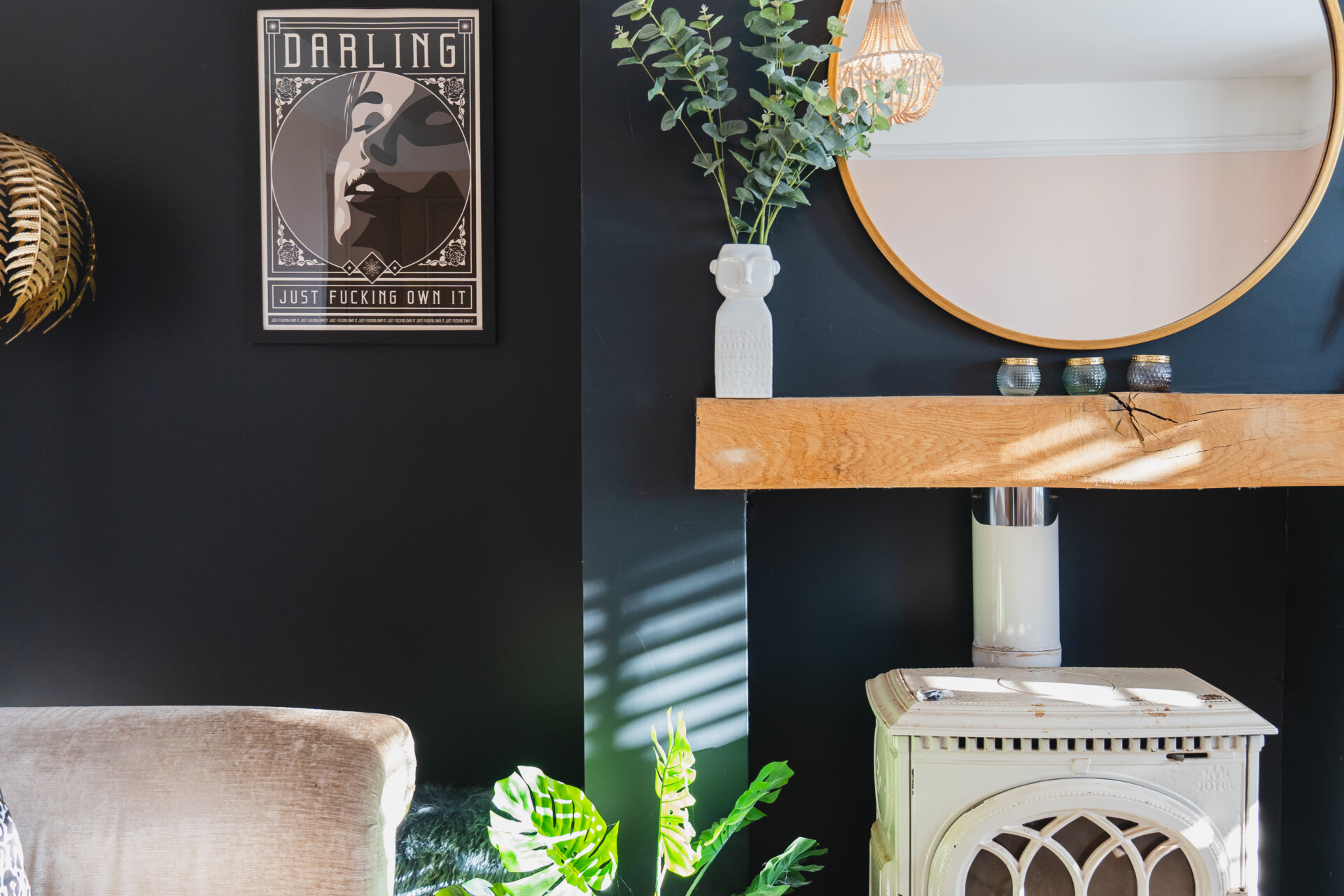In the realm of interior design, colour is a major factor that can transform a space and influence our emotions. In this blog post, we will explore how to effectively use colour psychology to create your desired feel and vibe for spaces within your home.
Calming neutrals for tranquillity.
Neutral colours such as soft greys, beiges, and warm whites are ideal for promoting a sense of calm and tranquillity. These hues provide a soothing backdrop, allowing other elements in your home to shine. Opt for neutral shades in bedrooms and relaxation areas to create a peaceful sanctuary where you can unwind after a long day.

Energising reds and oranges for vibrancy.
If you’re seeking to infuse your living spaces with energy and vibrancy, consider using shades of red and orange. These warm hues stimulate conversation and activity, making them ideal for social areas like living rooms or dining spaces. However, it’s important to strike the right balance – too much of either colour can be overpowering, so use it in moderation, perhaps as an accent colour.

Serene blues and greens for calmness.
Blue and green are renowned for their calming effects, reminiscent of the natural world. Pale blues evoke a sense of serenity, while deeper shades can promote introspection. Green hues, particularly those inspired by nature, are associated with renewal and harmony. Consider incorporating these colours in spaces where relaxation and focus are desired, such as bedrooms, home offices, and reading nooks.

Bright yellows for optimism.
Yellow is the colour of optimism, emitting feelings of joy and happiness. Incorporating yellow hues in kitchens, breakfast spaces, or areas where you start your day can influence your morning routine and set a positive tone for the day ahead. Be cautious with brighter or bolder yellows as they can be overwhelming if used excessively.

Sophisticated purples for luxury.
Purple is often associated with royalty, luxury, and creativity. Deep shades of purple, such as plum, can add a touch of opulence to your home. To achieve this vibe, consider using purple accents or statement pieces in living rooms, bedrooms, or home libraries to create an air of elegance and sophistication.

Balanced greys for versatility.
Grey is an incredibly versatile colour that can be used as a foundation or as an accent in virtually any room. Its neutrality allows other colours to pop, and it can act as a calming backdrop for bolder hues. Experiment with different shades of grey to find the perfect balance that suits your desired aesthetic.

To conclude, colour psychology is a powerful tool that can significantly impact the ambiance and mood of your home. By understanding the psychological effects of different colours, you can create a harmonious and uplifting environment that reflects your personal style. Whether you’re seeking tranquillity, energy, or a touch of luxury, harnessing the power of colour psychology can transform your living spaces.
So, don’t be afraid to explore the vast palette of colours available and experiment with different combinations to find what resonates with you. Embrace colour and let it breathe new life into your home.









